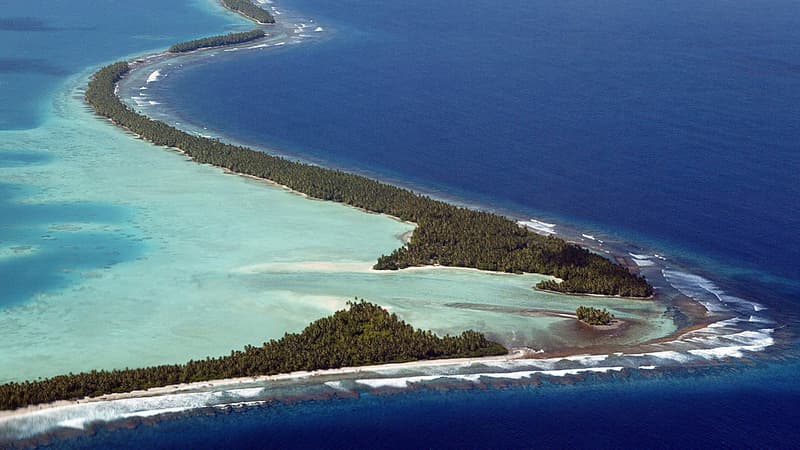Tuvalu could be one of the first countries submerged by the rise in sea levels linked to global warming, but that does not mean calling into question its statehood, warns the prime minister of the small Pacific archipelago. “Our sovereignty is not negotiable,” Kausea Natano insisted Thursday during an interview with AFP on the sidelines of the UN General Assembly.
The 11,000 inhabitants of Tuvalu are distributed across nine islands whose highest point does not exceed five meters above sea level. Two of the atolls depicted on its eleven-star flag have already disappeared and even some of the highest areas could become uninhabitable by 2100 due to soil and seawater contamination of the soil.
26 square kilometers
The Montevideo Convention on the Rights and Duties of States of 1933, a reference on the subject, is clear: a State is composed of a defined territory, a permanent population, a government and the capacity to interact with other States. So, if the territory is absorbed, or if no one can live off what is left of it, at least one of the criteria falls.
But in Tuvalu, the territory is only 26 square kilometers, while its territorial waters cover 800,000 square kilometers. And the Montevideo Convention is ambiguous about the definition of territory. Land and sea?
Despite its bleak future, Tuvalu does not want to give up hope of preserving its land for as long as possible. That’s why the government is fighting to get the world to really take climate change seriously, particularly by ditching fossil fuels. It also launched a coastal adaptation project that aims to recover 3.8 kilometers of land swallowed by the ocean and recover the most vulnerable areas. A program financed with 36 million dollars of international aid and 2.9 million from Tuvalu.
The situation is terrible, says Kausea Natano. Around 40% of the capital, Funafuti, is already under water during exceptional high tides, which also wash away crop roots. And although the first phase of the project is almost complete, the Prime Minister regrets that its limited scope cannot help all of his fellow citizens. “We need more action, faster, from anyone who is in a position to help us, urgently,” he insists.
“Nation-states 2.0”
In this sense, the country is at the forefront of the climate fight on the international stage, calling for a global tax on fossil fuels and the establishment of a fund aimed at compensating for the “losses and damages” of developing countries. So far, at COP27 to be held in Egypt at the end of 2022, only the principle of such a fund has been accepted, which would be financed by rich countries.
Should the worst happen, Tuvalu began safeguarding its cultural heritage in the virtual world, creating what some have called a “Nation-State 2.0” model. But the fate of Tuvalu risks being only a preview of what awaits many cities vulnerable to rising waters in the four corners of the planet, from Miami to Manila, emphasizes Kausea Natano.
“More and more citizens of the world will have to live somewhere else,” he warns. “Use us as a model to preserve the entire world.”
Source: BFM TV


